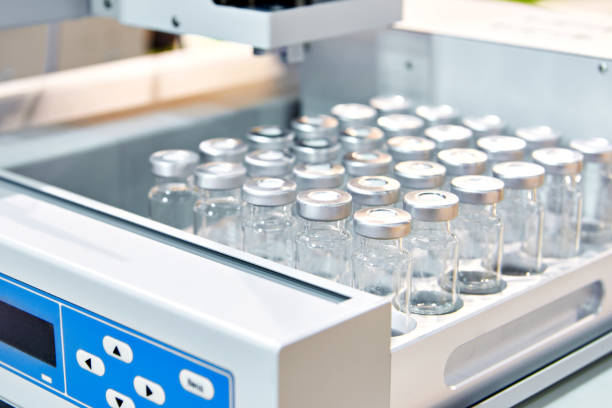Chloral hydrate

Chloral hydrate has limited use as a sedative and hypnotic pharmaceutical drug. Safe Home offers a few kits that provide drinking water testing for Chloral hydrate in city and well water supplies.
Parameter Type: Drinking Water Testing for Volatiles
Parameter Name: Chloral hydrate
What it is and Where it Comes From:
Chloral hydrate is a geminal diol with the formula C2H3Cl3O2. It is a colorless solid. It has limited use as a sedative and hypnotic pharmaceutical drug. It is also a useful laboratory chemical reagent and precursor. It is derived from chloral (trichloroacetaldehyde) by the addition of one equivalent of water. The major route of exposure to chloral hydrate is from chlorinated drinking-water. A typical concentration of chloral hydrate in a public water supply in the USA is 5 µg/liter. More than 200 million people in the USA are routinely exposed to chloral hydrate from this route. Assuming water consumption of 2 liters per day and a body weight of 70 kg, the exposure is 0.14 µg/kg body weight per day. Additional exposure could result from inhalation of aerolized water during showering. As these water droplets are typically not small enough to penetrate deep in the lung, they are deposited in the upper airways. Thus, the water droplets are an additional source of oral exposure to chloral hydrate. Some chloral hydrate from water used for showering/bathing would also be absorbed through the skin. Quantitative data on these additional sources of exposure are not available. Drinking water testing gives you several benefits like peace of mind, identifying contaminants in your water, and insight into health concerns. Safe Home offers Laboratory drinking water testing kits for Chloral hydrate, allowing you to collect your water sample and ship it directly to our EPA-Certified Laboratory. This platform of drinking water testing for Chloral hydrate will give you an accurate level based on the lowest level of a parameter our instruments can detect (Method Detection Level). Safe Home drinking water testing for volatiles can be used for city and well water supplies. Drinking water testing should be done any time you notice a significant change in your water quality.
Health Effects:
Drowsiness and trouble waking up in the morning, nausea, vomiting, stomach pain, diarrhea, and headache may occur. Stomach problems can be reduced by taking chloral hydrate with a full glass of water. If any of these effects persist or worsen, tell your doctor or pharmacist promptly.
Solutions to Contaminant Levels:
After drinking water testing, what is the next step? A filter with granular activated carbon (GAC) is a proven option to remove certain chemicals, particularly organic chemicals, from water. GAC filters can be used to remove chemicals that give objectionable odors or tastes to water such as hydrogen sulfide (rotten eggs odor) or chlorine. Reverse osmosis is a process that removes foreign contaminants, solid substances, large molecules, and minerals from water by using pressure to push it through specialized membranes. Here’s how reverse osmosis works. Unlike osmosis, which is a passive process, reverse osmosis requires external force (pressure) to work. Pressure is applied to a highly concentrated solute solution, such as salt water, to pass through a membrane to a lower concentrate solution. The membrane allows water to flow through but blocks out larger molecules, like contaminants. The reverse osmosis process leaves higher concentrations of solute on one side and only the solvent, or freshwater, on the other. Who do I need to contact to find out more information about water quality in my area? Every community water supplier must provide an annual report to its customers, known as a Consumer Confidence Report (CCR). The report provides information on your local drinking water quality, including the water’s source, contaminants found in the water, and how consumers can get involved in protecting drinking water. How often does the local public water system preform drinking water testing? Frequency of drinking water testing depends on the number of people served, the type of water source, and types of contaminants. Certain contaminants are tested more frequently than others, as established by the Safe Drinking Water Act. You can find out about levels of regulated contaminants in your treated water for the previous calendar year in your annual Consumer Confidence Report (CCR).


